The Keith Haring (1958-1990) Exhibition is on until March 17th. It explores the breadth of his work – his joy, his activism, his collaborations and his crusade to make art for everybody.

If you have some familiarity with art (and maybe even if you don’t), then you will instantly recognize a Haring image – like Bansky’s “Girl With Red Balloon”. In fact, Bansky incorporated Haring into “Choose Your Weapon”, 2009
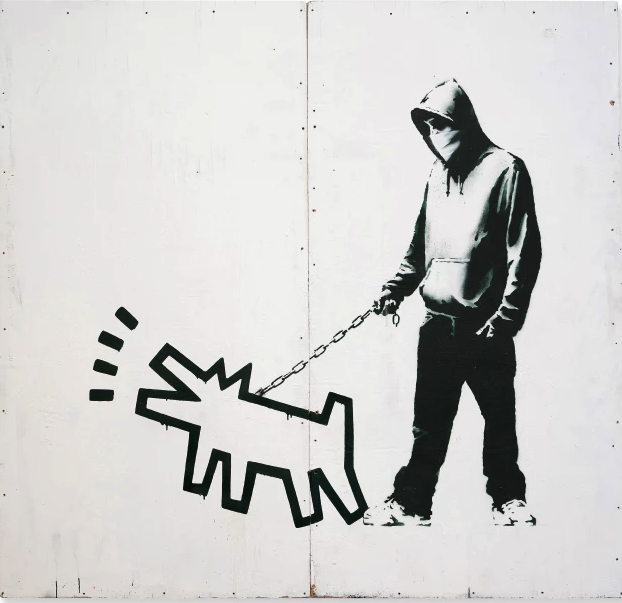
Haring is a “Master of the Line” and the exhibit covers his 10 year output, from his graffiti roots to large scale works, video and more. I’ll take you through the rooms and explain a little of what is being shown.
I’m wearing the “Dancing Dog” t-shirt because I’ve had a few dancing dogs in my life. Haring knew what pleasure a dancing dog can bring. The piece is “A Pile of Crowns for Jean-Michel Basquiat”, 1988. Haring paid tribute to Basquiat after the artist’s death in 1988.
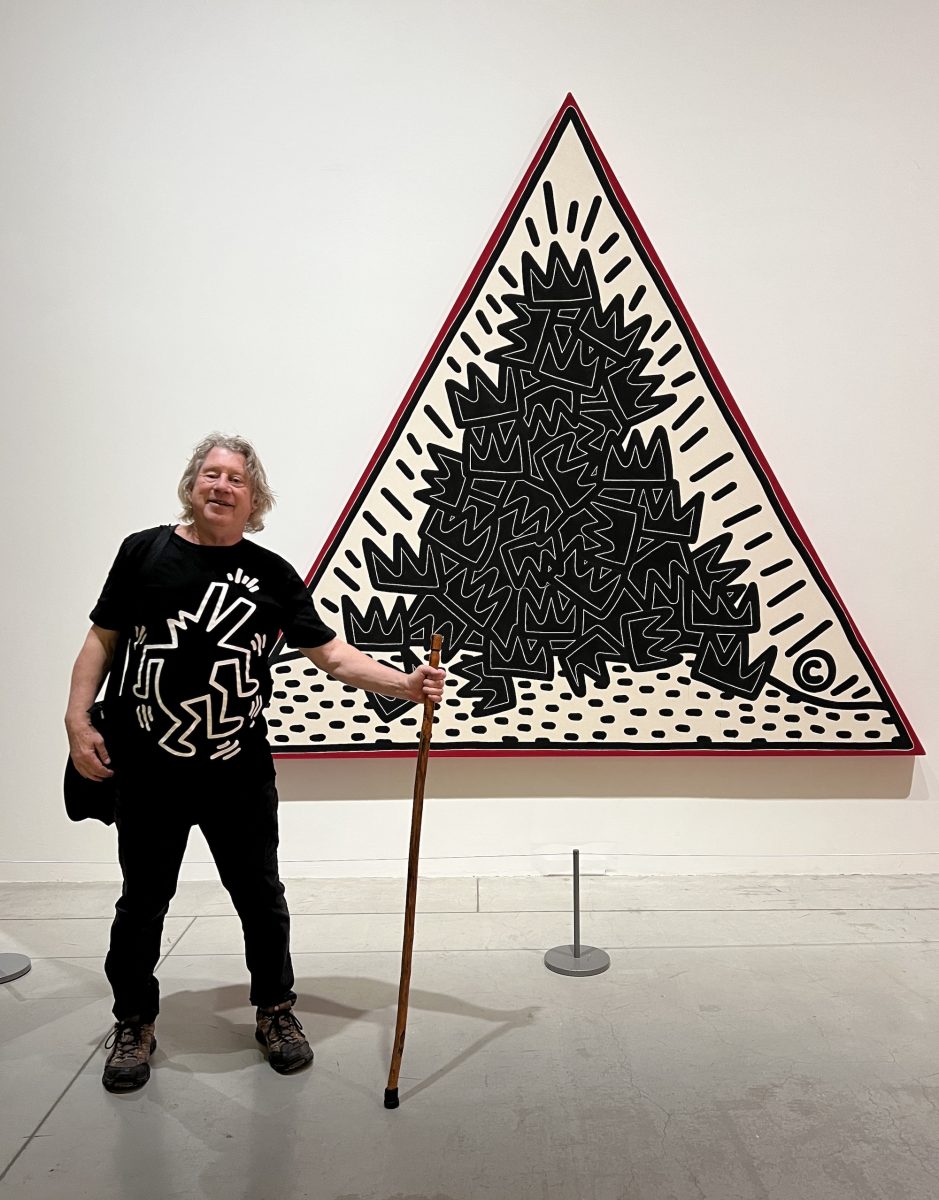
I am using this AGO experience to learn more about art. I’m one of the “everybody”. I did not know about Haring’s life only some of his images. I’m going through each room reading what the curators Sarah Loyer of The Broad, Los Angles and Georgiana Uhlyarik of the AGO have offered.
As the caption reads, I’m glad he is leaving it up to me to decipher what I’m seeing. Although, the curators have provided some explanations which I’ll pass on to you.
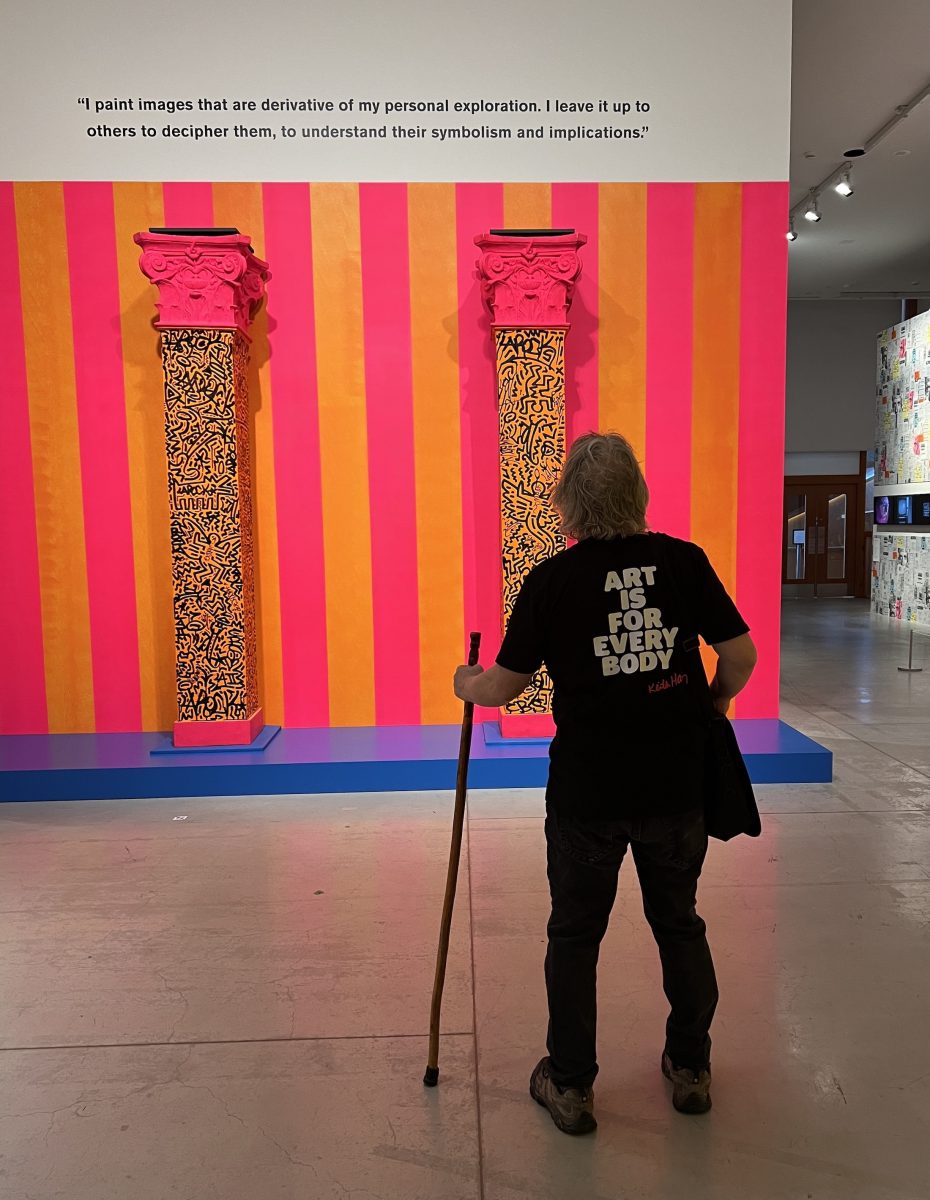
“Drawing is still basically the same as it has been since prehistoric times. It brings together man and the world. It lives through magic.”
Keith was from a rural, conservative town in Pennsylvania. But he was a little rebel. At the age of 12 he was at bible camp. He popped out of a cardboard cake, dressed as a woman and did a strip tease.
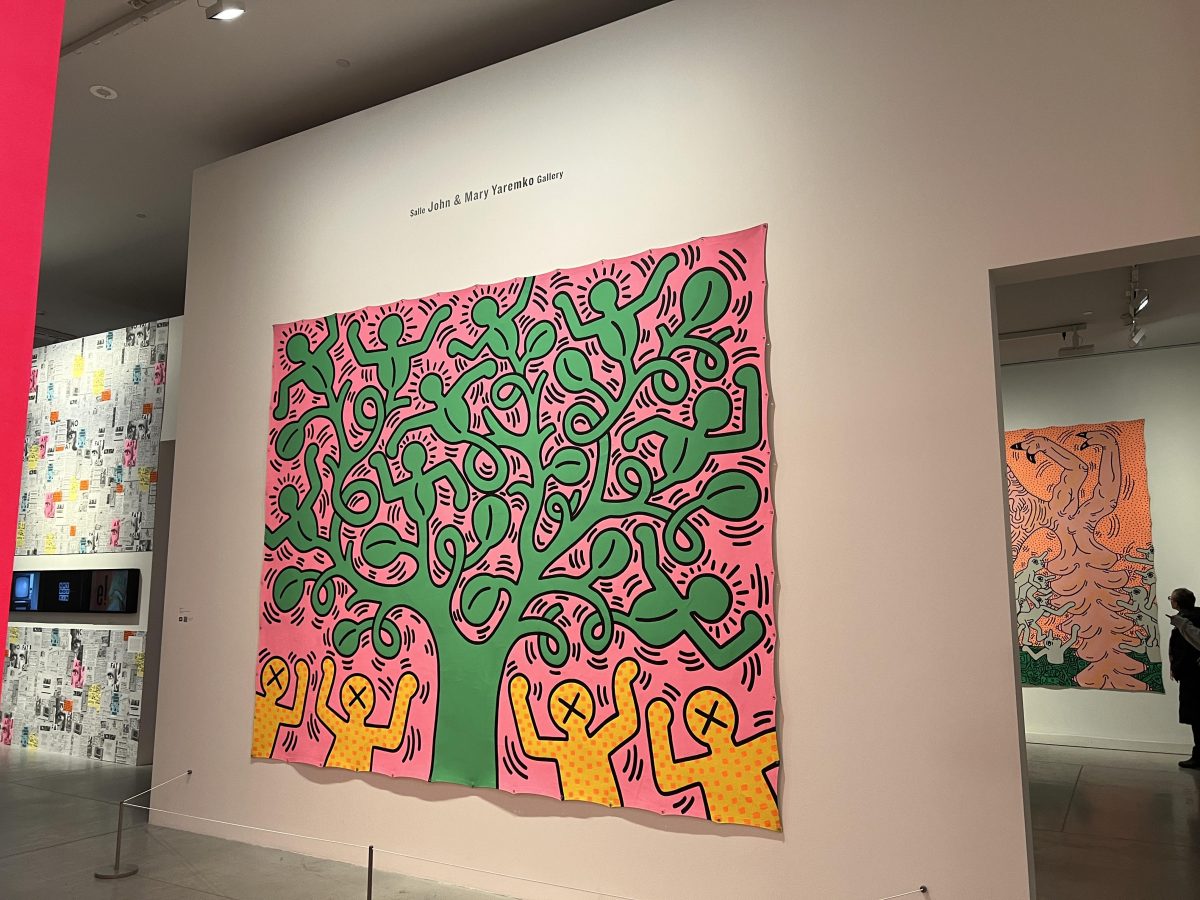
“Untitled”, 1981. One of the big pieces in the first room I entered. It was almost like Where’s Waldo as I searched the canvas for different figures hidden between the lines.
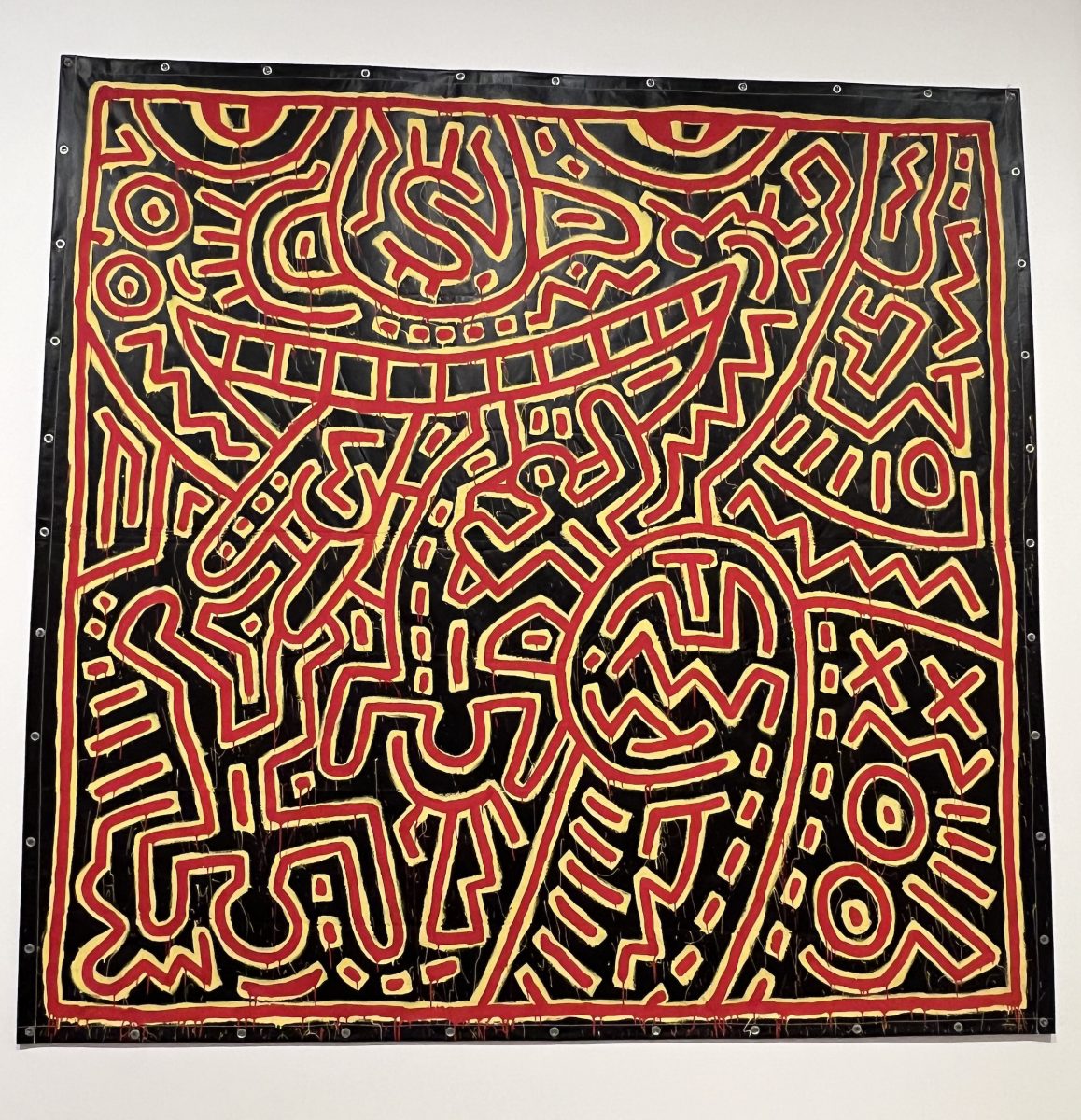
It also reminded me of the maze puzzles I did as a kid. There are warnings not to touch the paintings but I almost wanted to take my finger and move along the lines. I concentrated and tried to follow with the lines with my eyes but it was difficult.
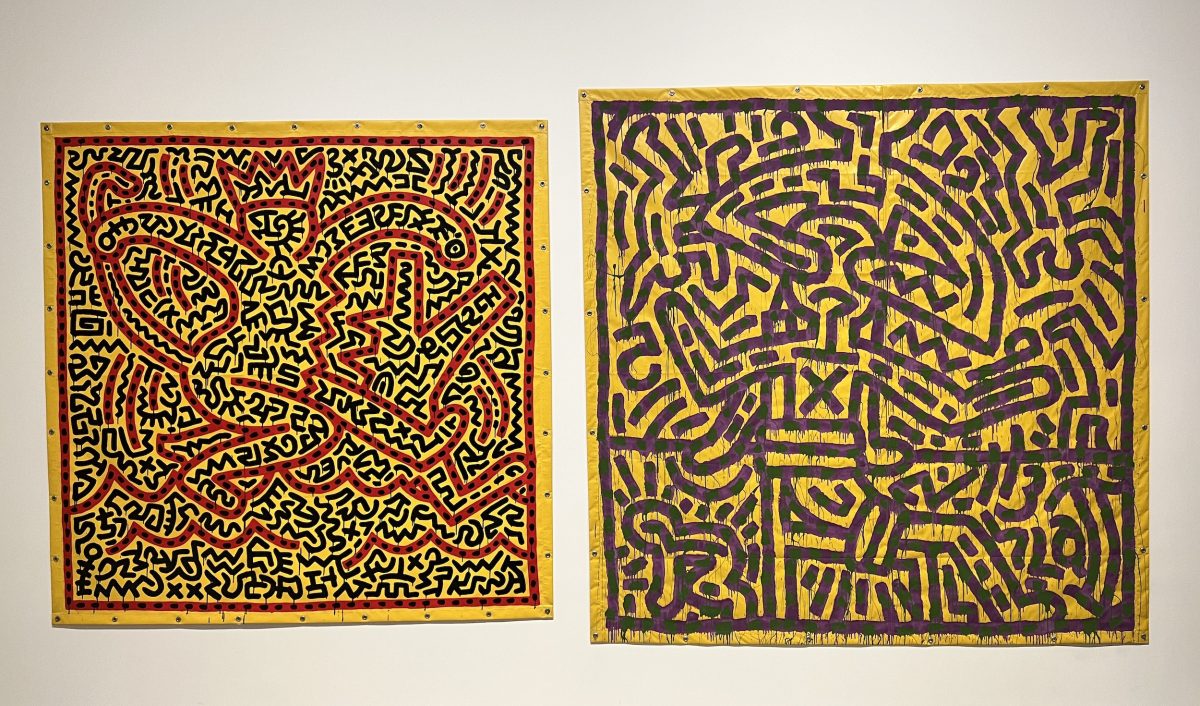
His father did drawings of cartoons from Walt Disney and encouraged Keith’s talent. While doing his first show in Pittsburg, he found a piece of paper that read “God is a dog” and “Jesus is a monkey”. The words cause him to think about life and he turned to punk culture. Next year he moved to New York City in 1979 and embraced the emerging graffiti, hip-hop and the club scene. He declared his homosexuality.
“Untitled”, 1982. I see a rescue painting – dogs entering my heart with love.
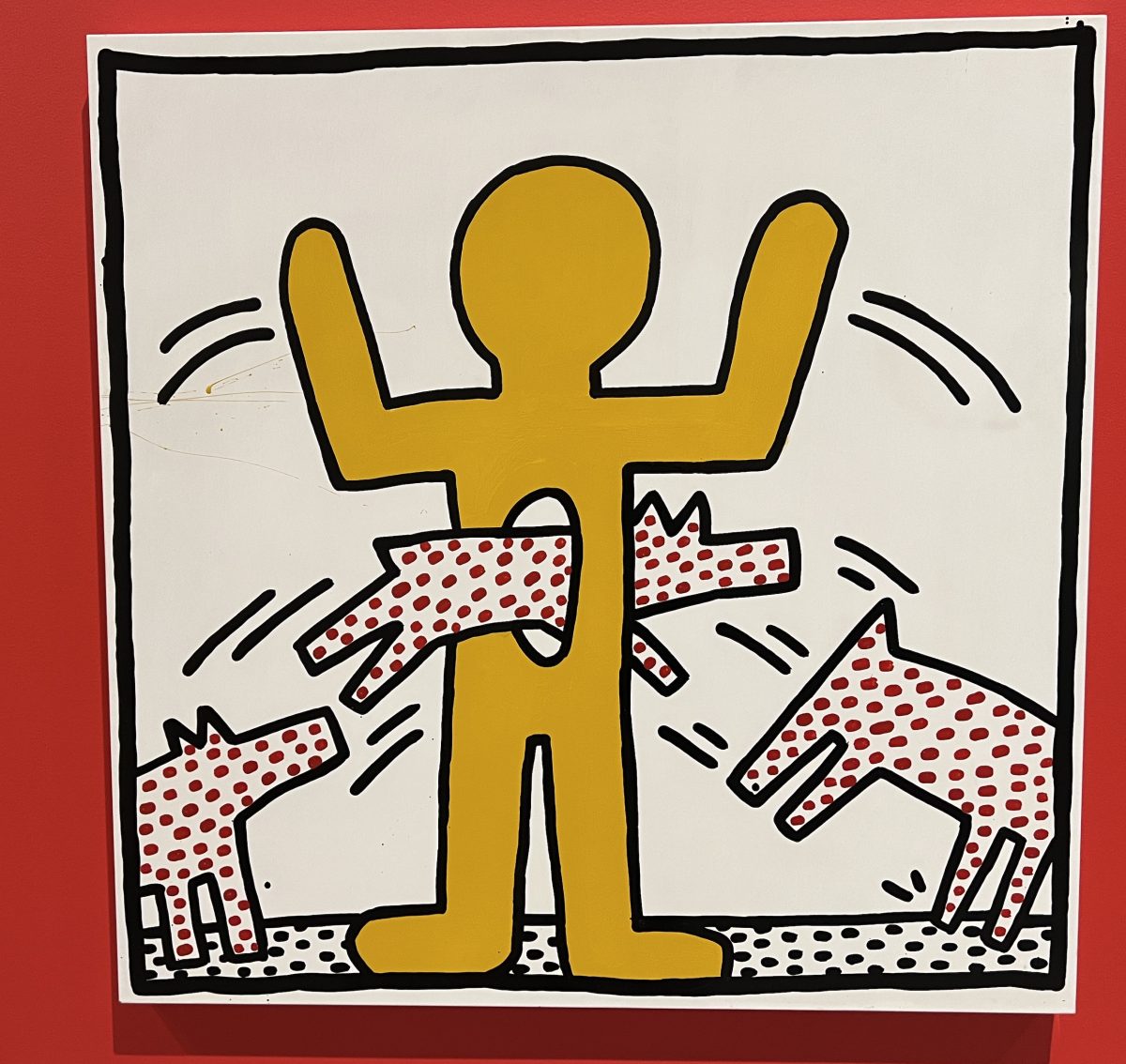
He started drawing his lines publicly, having to use both speed and precision so has not to get caught.
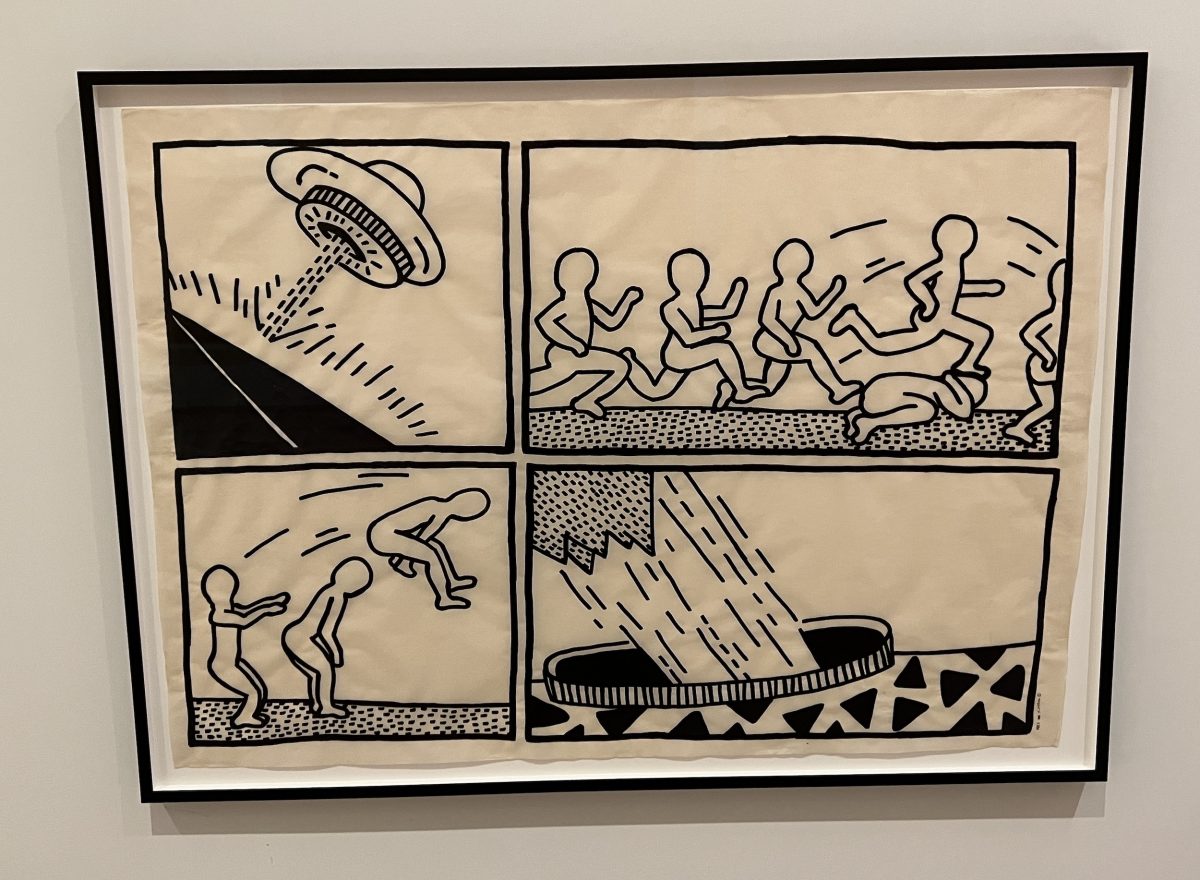
He had an interest in semiotics – looking at language, taking it apart and rearranging words. He clipped headlines of Ronald Regan from the New York Post and rearranged the words to create an anti-headline. He would make copies and paste them on outdoor posts.
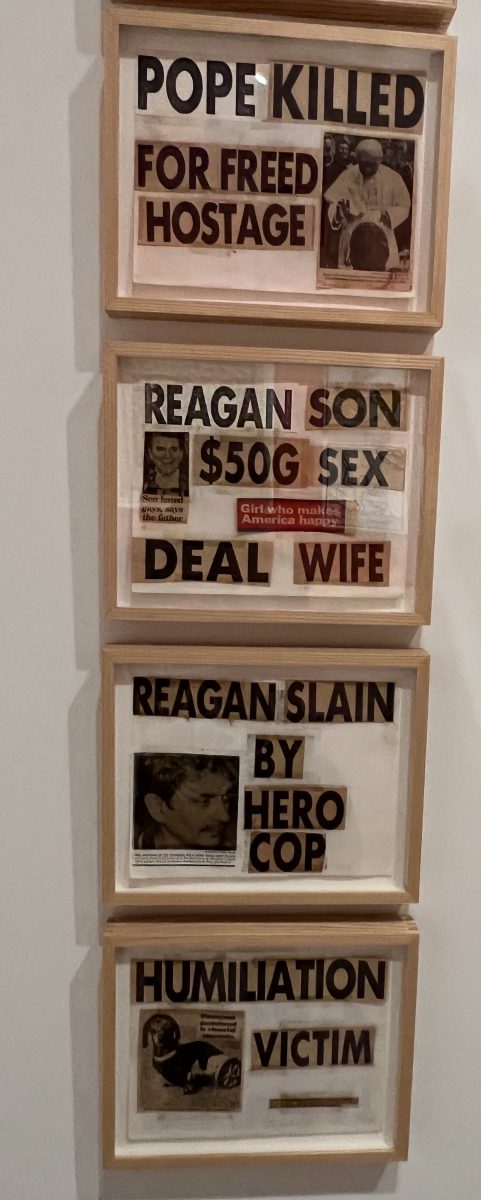
“Drawing on the New York Subway Map”, 1983. 3 babies crawling across the top of the map. The radiant baby was his signature tag on outdoor graffiti. The subway became his arts space
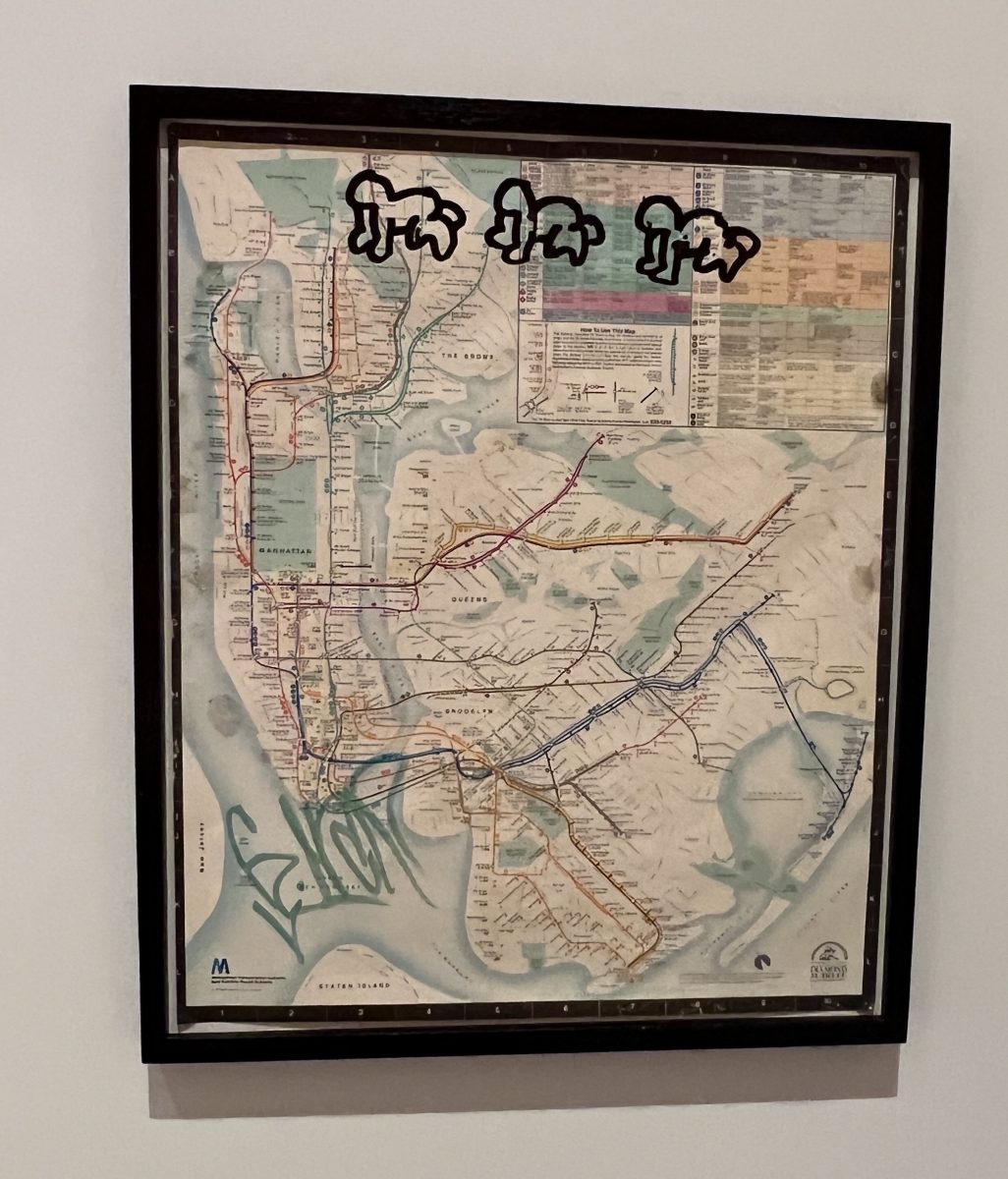
“Red Room”, 1988. There was no place to sit and view this one. There is a lot to take in but had to soon sit down. In the centre is a reclining woman. It references Henri Matisse including his gold fish in the bottom left. Artist Frank Stella in the top centre and Jasper Johns on the right.
I recall that Sarindar Dhaliwal also referenced artists in her paintings.
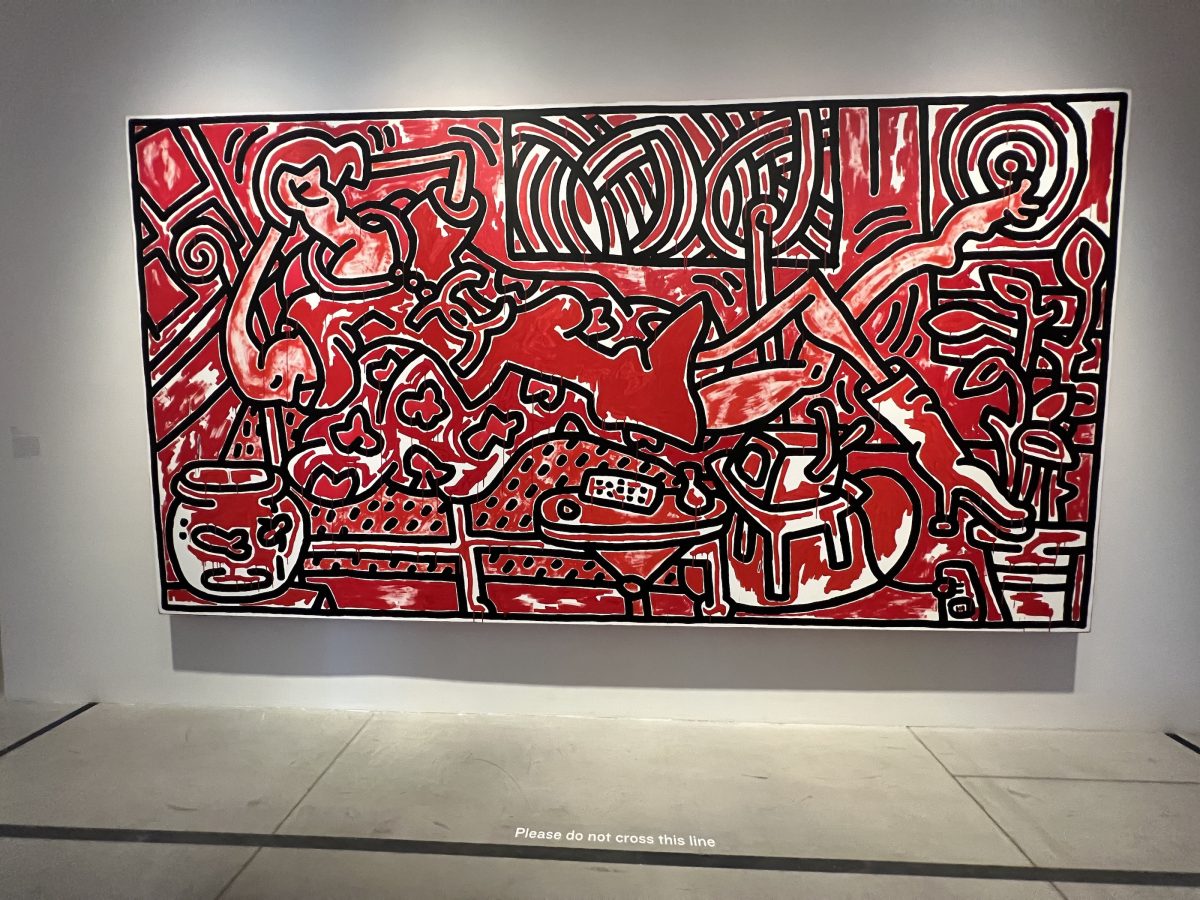
I got to the “collaboration” room. A video was playing and there was a bench to sit on. The room was “Party of Life” and presented the various people in Haring’s artistic life – artists, dancers, musicians, singers, poets. This is dancer Bill T. Jones and a performance of his “Four Dance – Long Distance”. Meanwhile, in the background, Haring paints. One of the paintings he did was “Red Room”.
The Party of Life was his annual birthday celebration. At the first one, Madonna sang and wore “3-Piece Pink Leather Suit”, 1983 – designed by Haring and his collaborative partner LA II (Angel Oritz). Madonna performed “Dress You Up” and “Like a Virgin”.
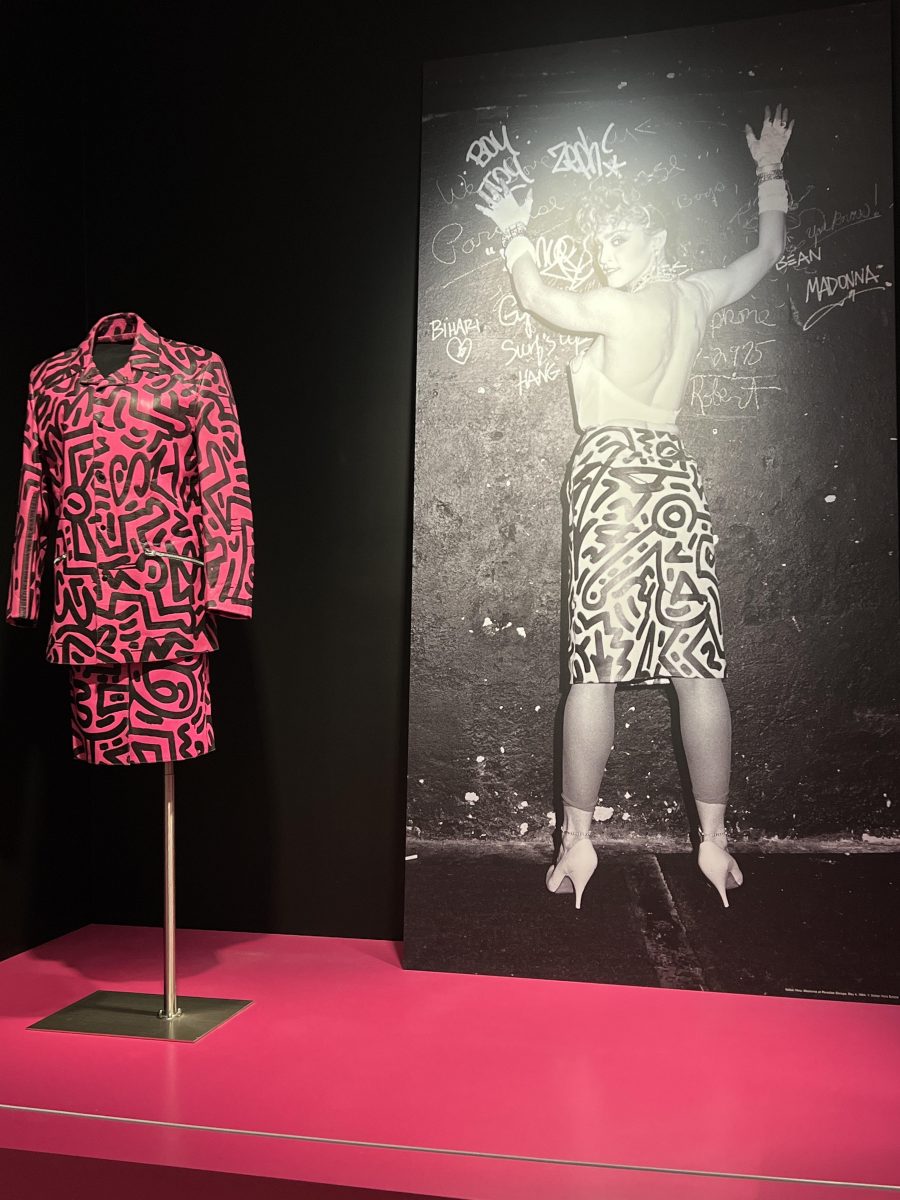
Another piece in the room was “Snake Totem”, 1984. It is done with felt pen on cut out metal pieces. It was created by Haring and jewelry designer David Spada. Singer/Actress Grace Jones wore it for her Interview magazine photoshoot with Robert Mapplethorpe.
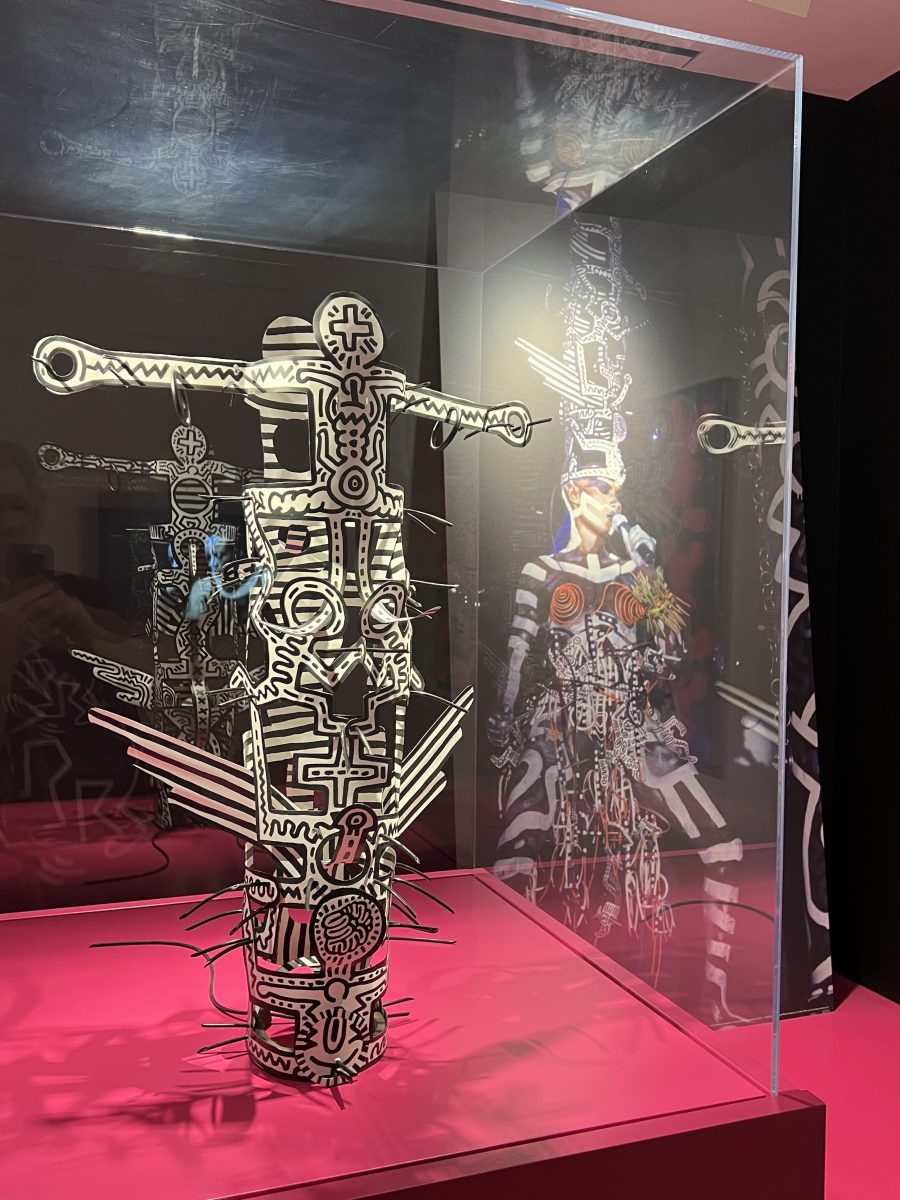
Both of these pieces could be viewed on video through a QR code. And, of course, it would not be a New York 80s party without Andy Warhol
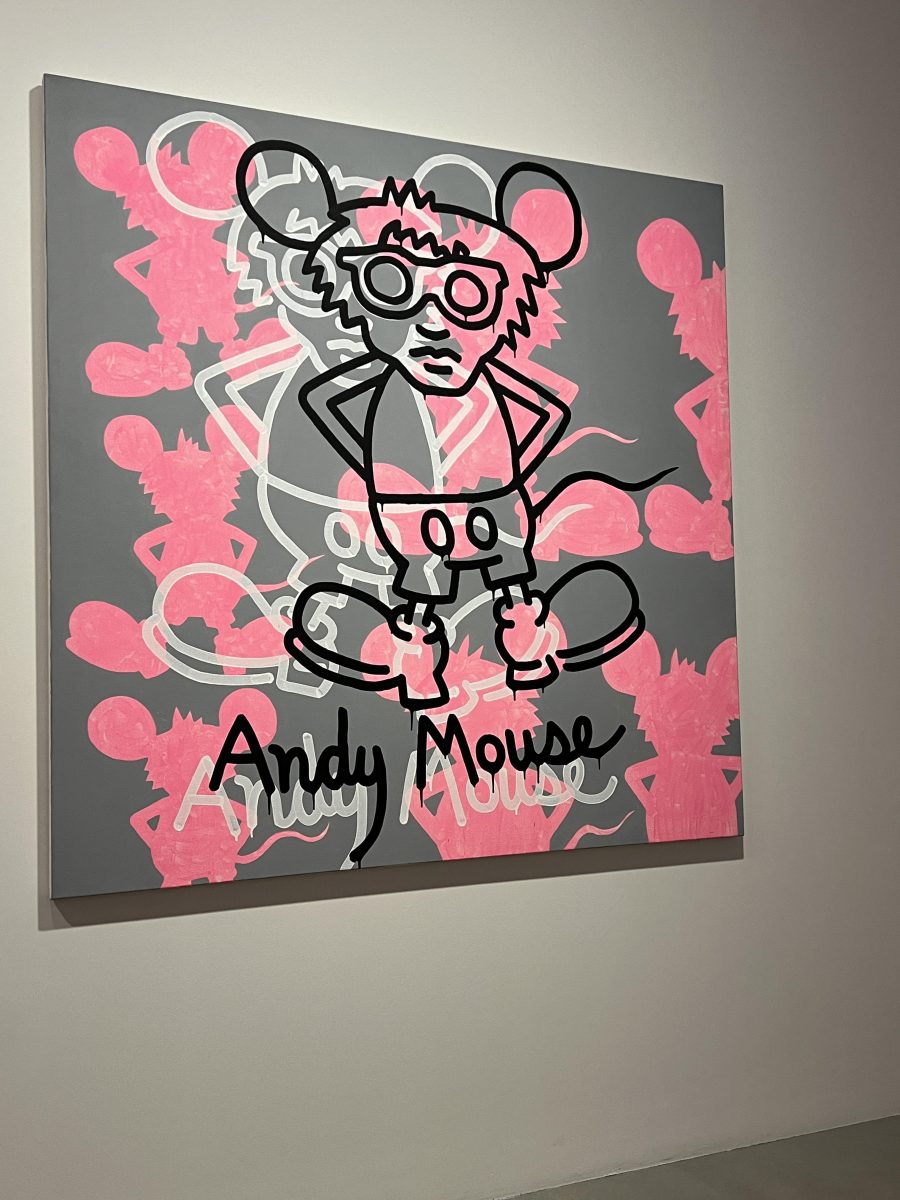
As I was sitting on the bench, my eye kept wandering out the door to this image:
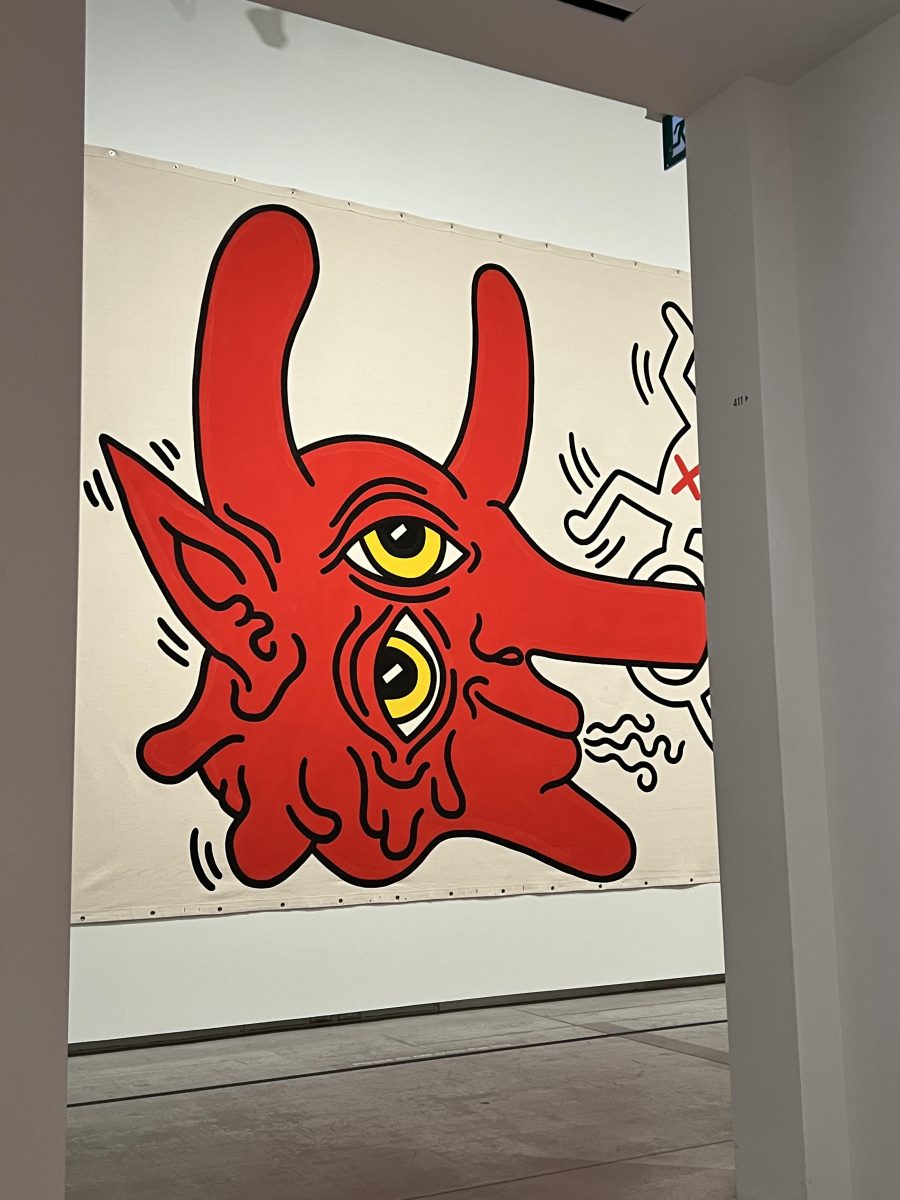
The room was entitled “Monumental” and explored Haring’s criticism of capitalism, consumerism, religious oppression. I followed the nose – “the corrupt abuse of power for gain”
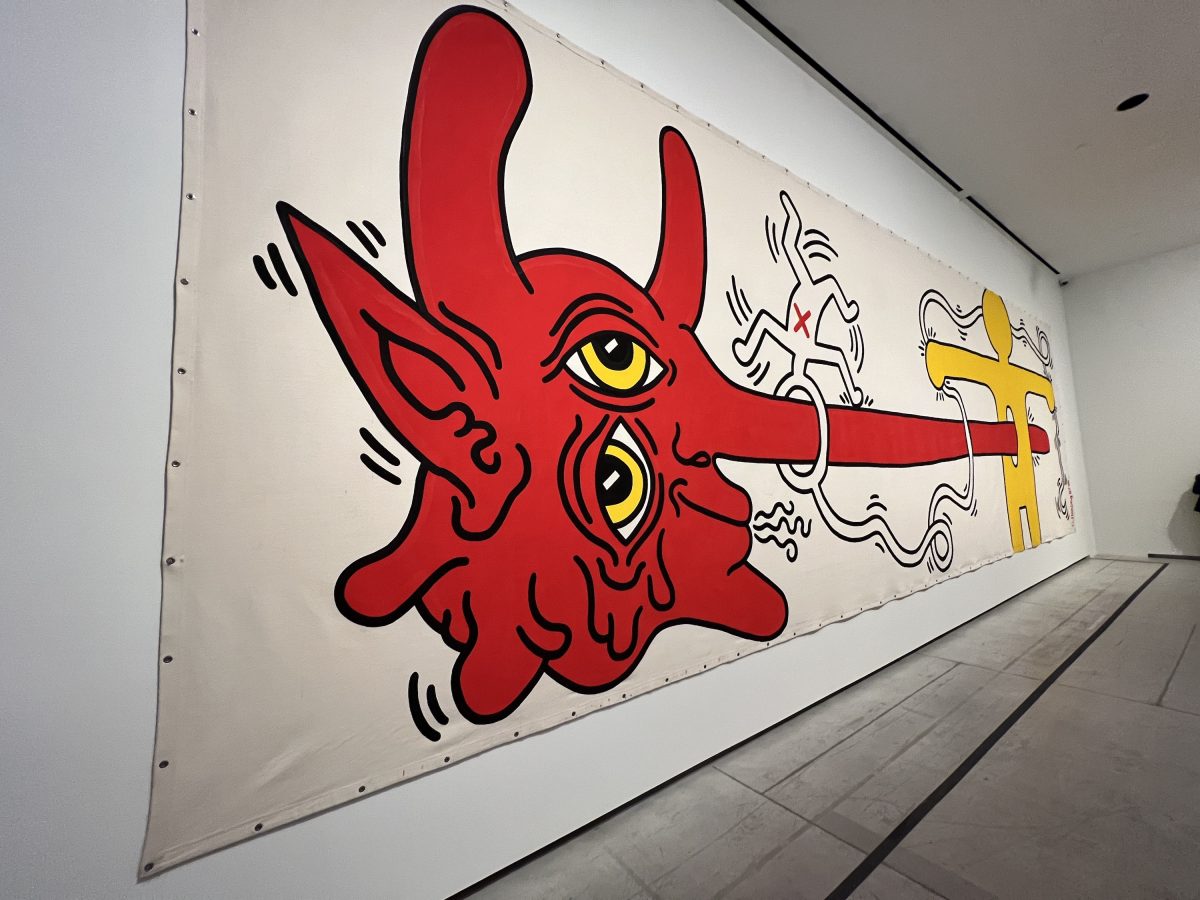
“I try to make images that are universally ‘readable’ and self-explanatory. An artist is a spokesman for a society at any given point in history. His language is determined by his perception of the world we all live in. His is the medium between ‘what is’ and ‘what could be’.
There were two tall pieces in the centre of the room “Robot”, 1983 and “Untitled”, 1983.
The pieces were influenced by the totem poles of the Indigenous Pacific North West. Thunderbird sits atop Untitled.
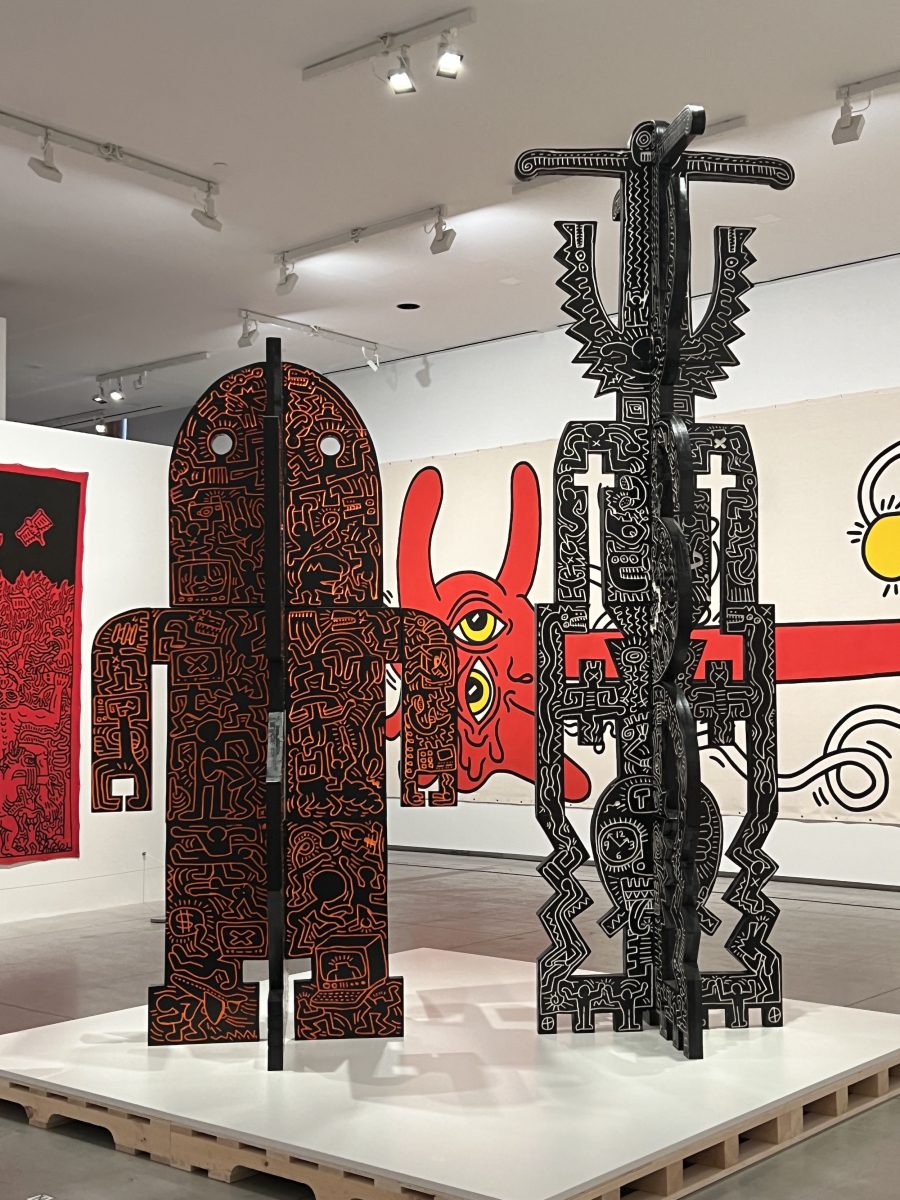
Haring learned to use a wood cutting router. This time his lines were grooves in wood paneling. They were finished with enamel and Day-Glo paint.
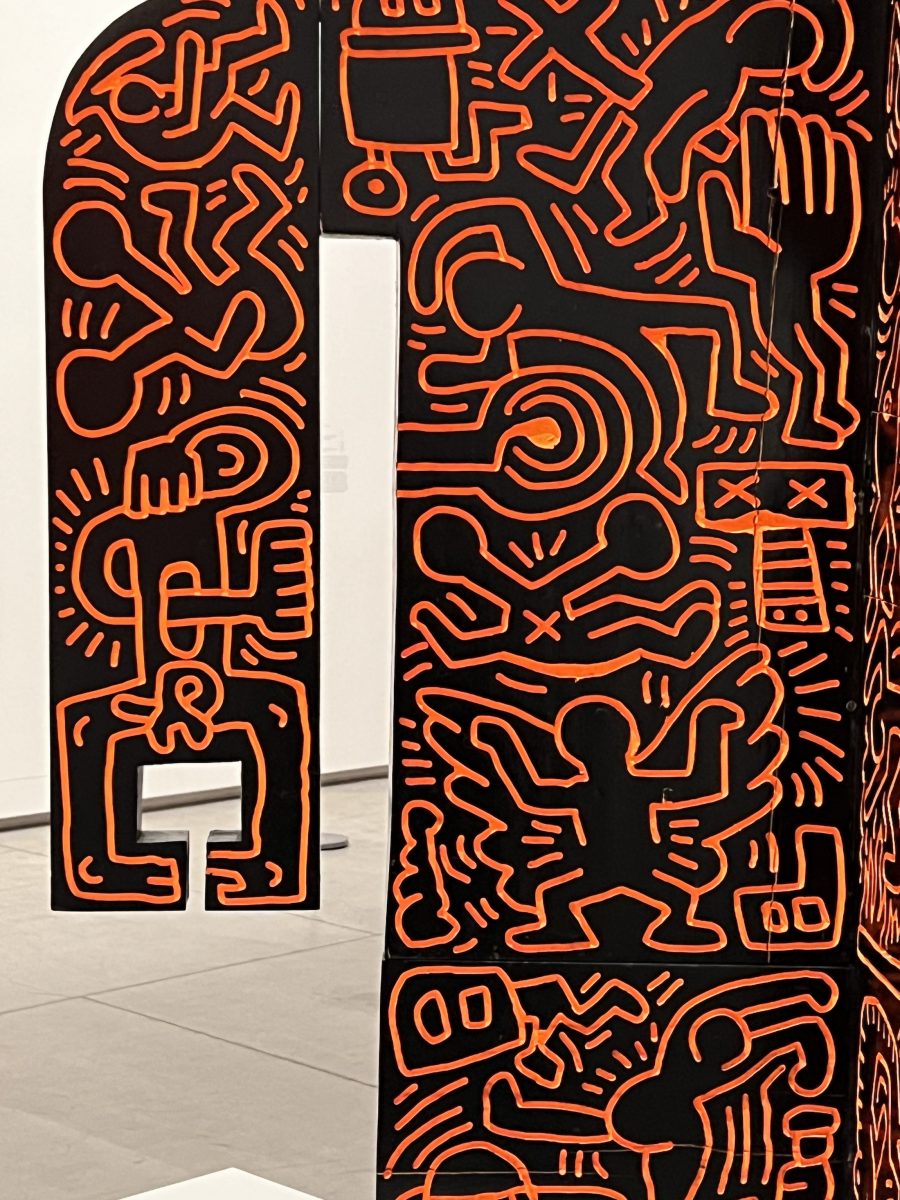
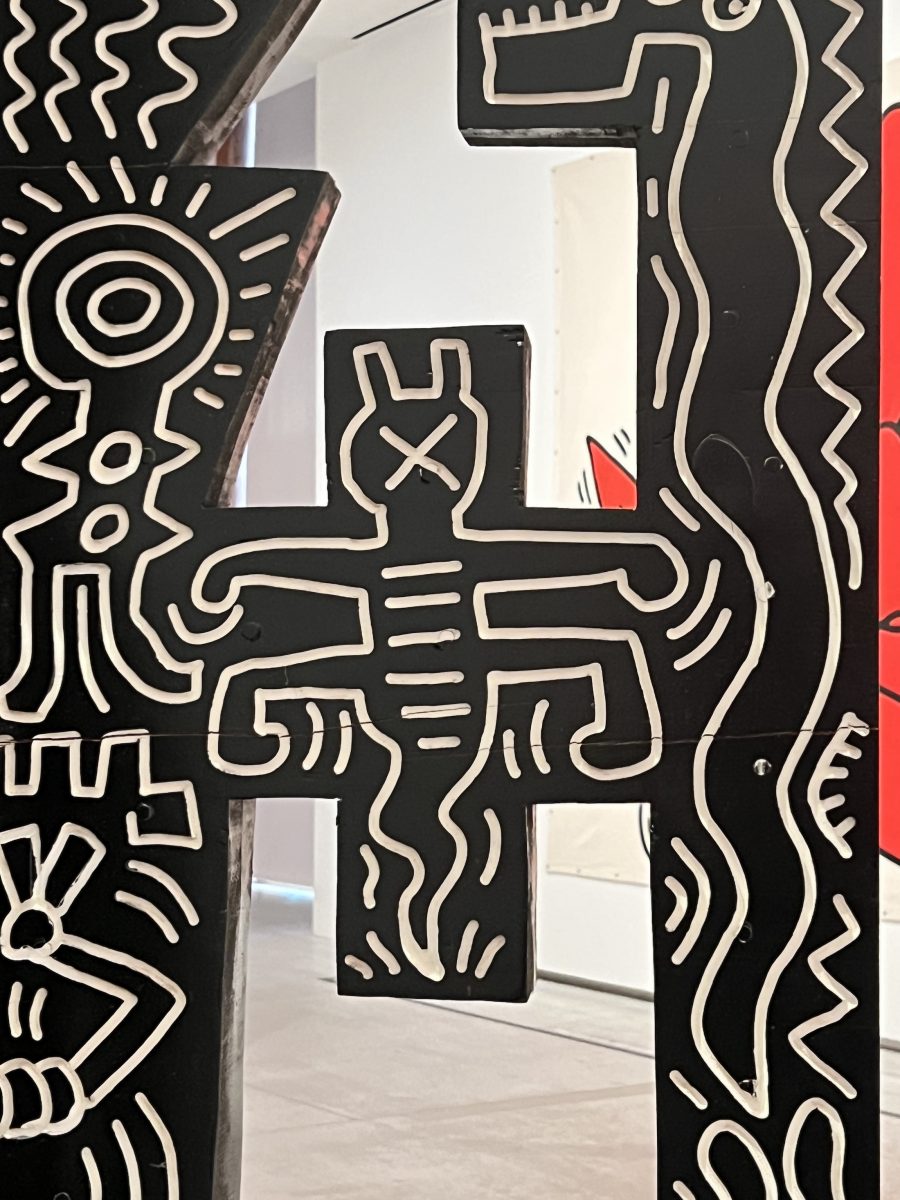
“Matador”, 1989 reflects the oppression of patriarchy. I’ve just finished reading “The Sun Also Rises” by Ernest Hemingway so have an understanding of bullfighting, accepted violence and patriarchy. For Haring, the matador and cape is represented by a large, erect phallus. The bull is a reflection of Picasso’s bull in the anti-war painting “Guernica”.
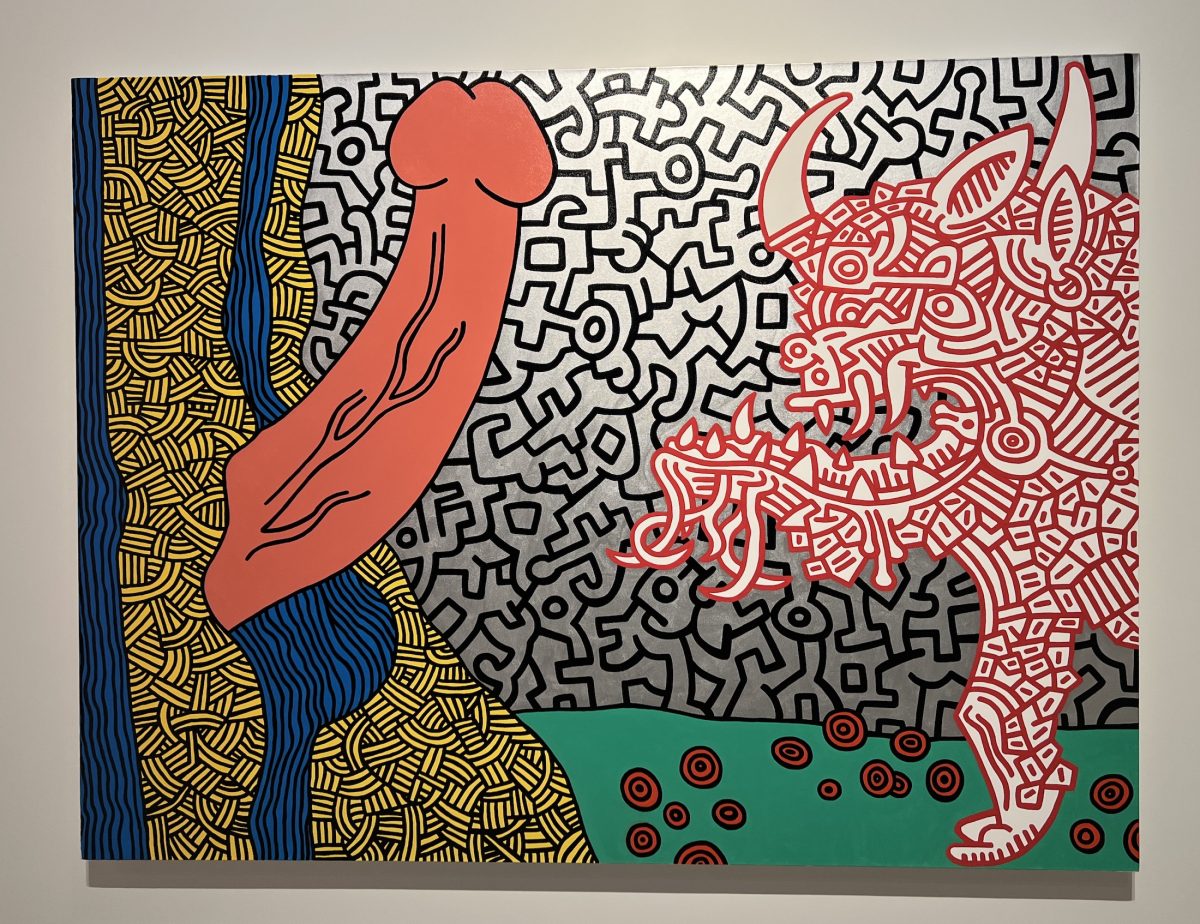
I come to the last room “Aids Activism”. In 1988, Keith was diagnosed with AIDS. He setup the Keith Haring Foundation to continue his work and activism. My Dancing Dog t-shirt is from the Keith Haring Foundation.
Haring used his imagery to bring awareness of the epidemic, to help those who were struggling. “Art Attack on AIDS”, 1988
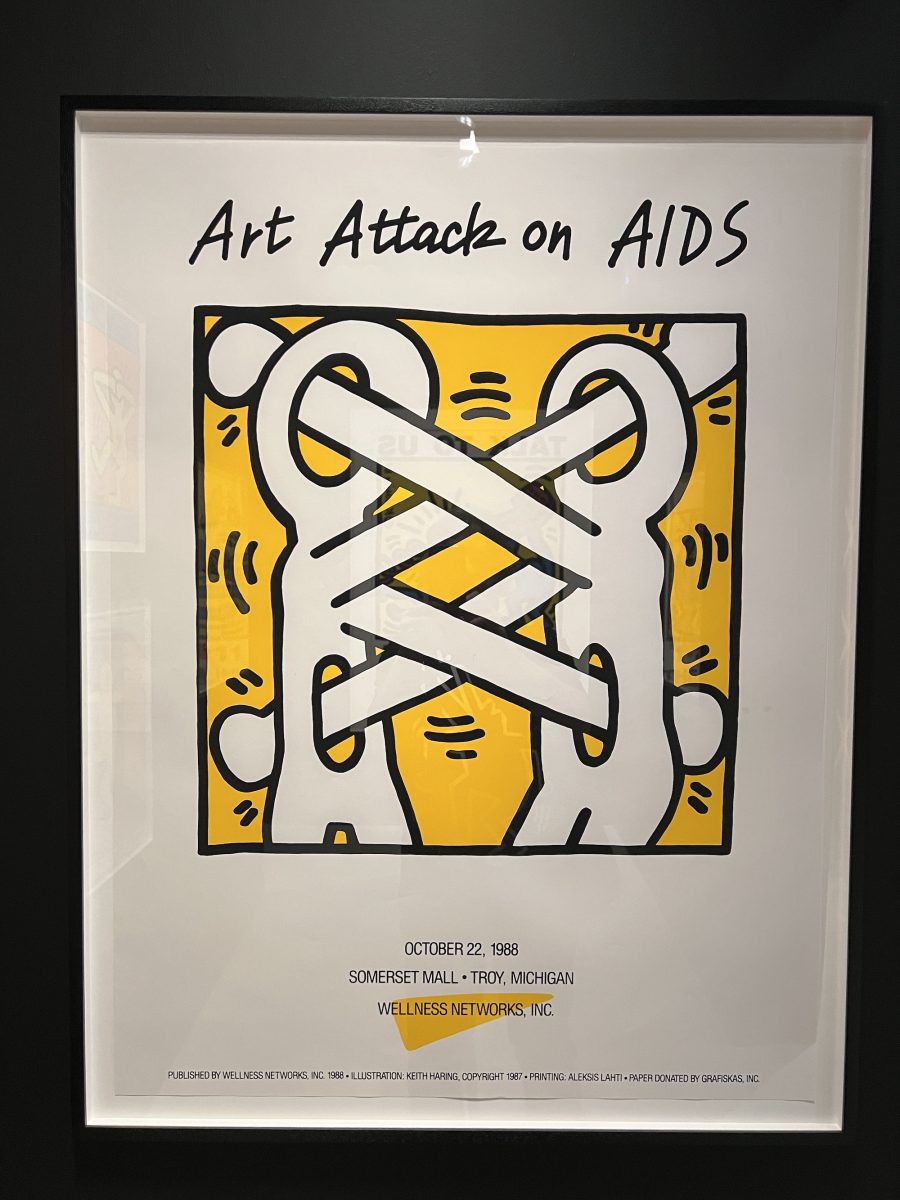
“AIDS: Trading Fears for Facts, A Guide for Teens”, 1988. Dispelling mis-information to young people.
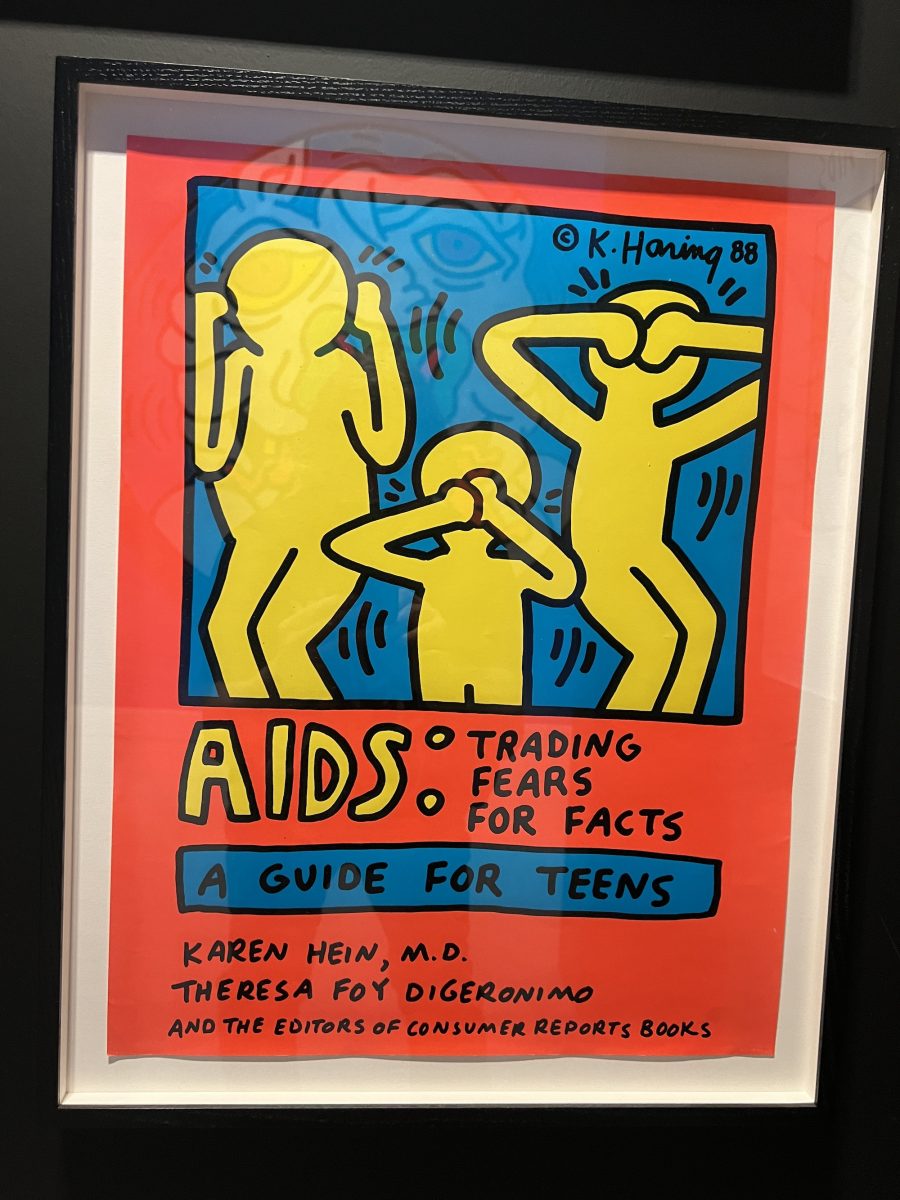
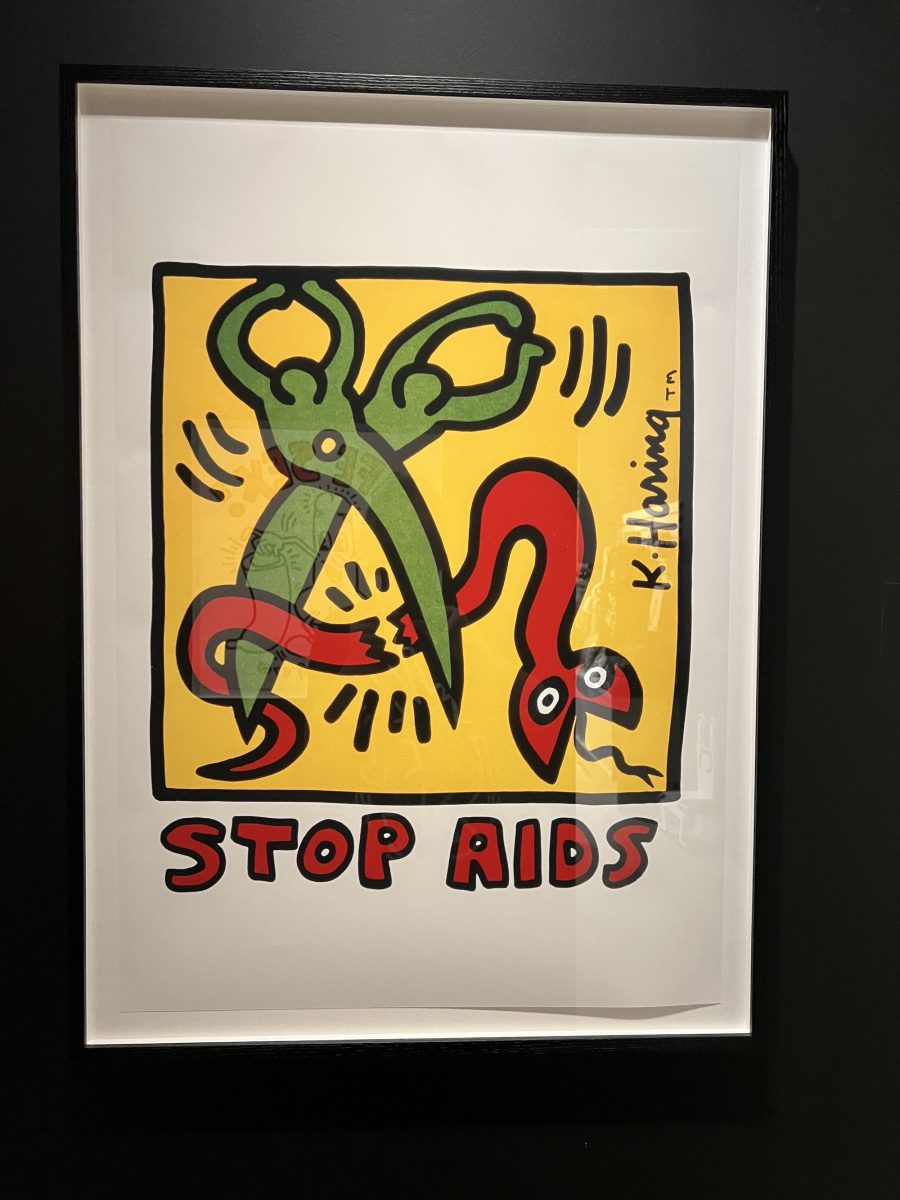
Finally, after exiting, I found a bench to rest. Before me was a large, disturbing piece. “Untitled”, 1988 shows a figure struggling to climb up some stairs with a large egg tied around them. Out of the cracked egg is a sperm with horns. It, more than any other, exemplifies the tragedy of the 80s AIDS epidemic.
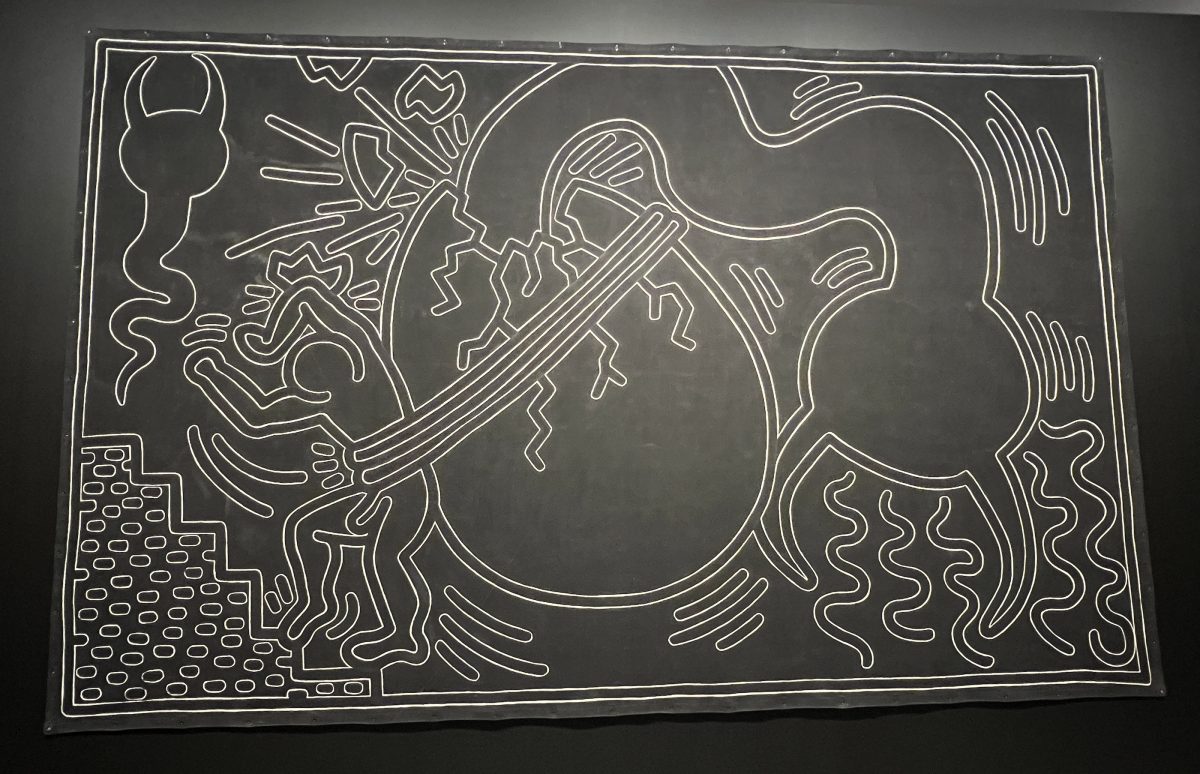
The piece was positioned on an out of the way wall. I was able to explore it because the bench was right before it. Other people came out of the exit and continued on to the elevator. A couple saw me looking at it and came over to view it.
As I was heading toward the main exit, I passed the soapstone carvings in display cases. This one jumped out at me – “Screaming Faces”, 1991 – Manasiah Akpaliapik. I see anguish and trauma. Somehow a connection to the Keith Haring exhibit – the artist as a spokesman for the world we live in.
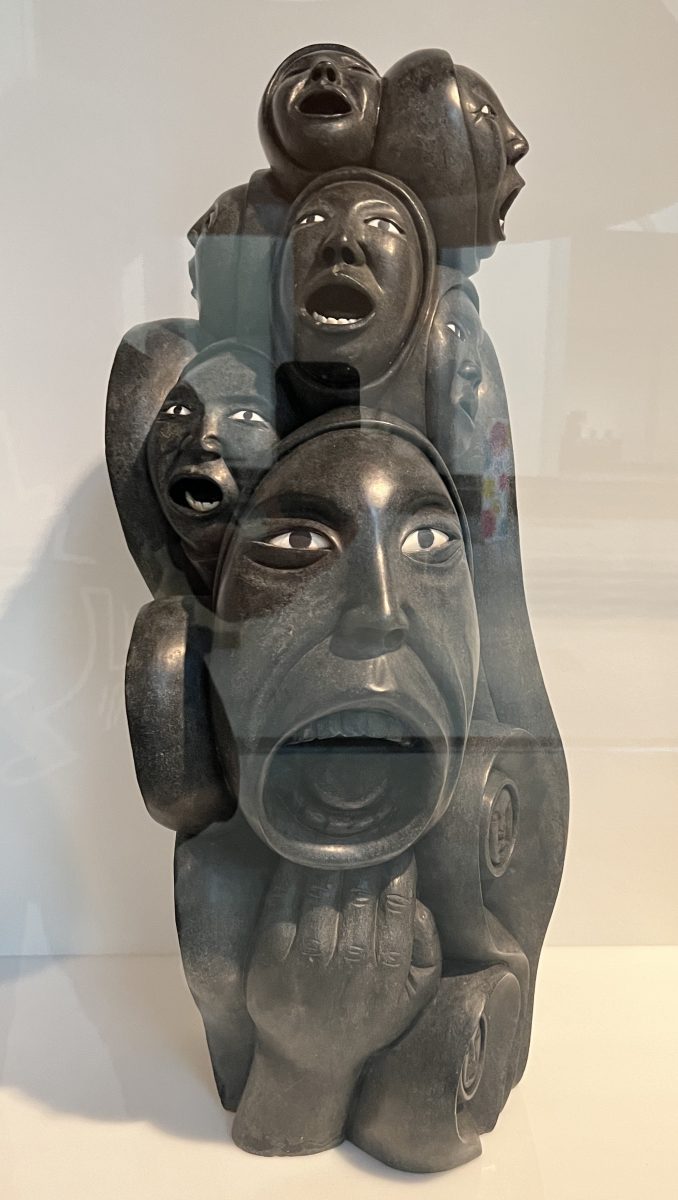
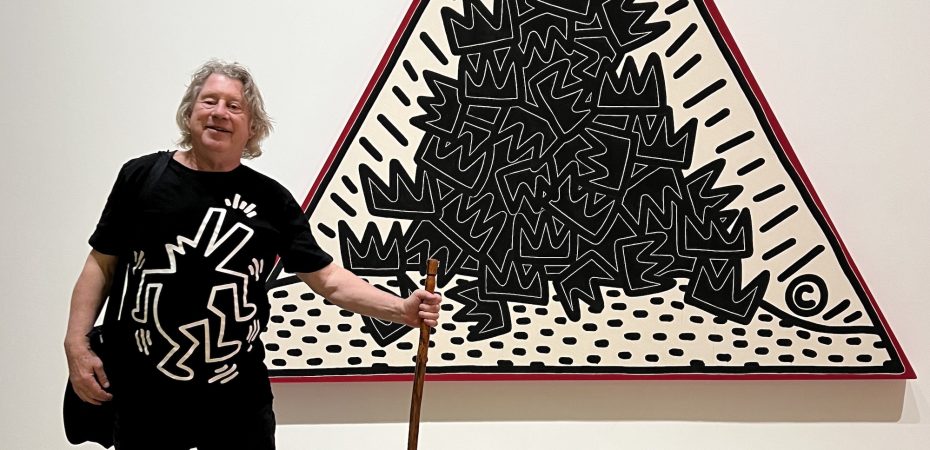
I love this in-depth walk through of the AGO’s Keith Haring exhibit! Thank you so much for sharing it with us. Keith’s activism truly inspires me.
Thanks Erin, I knew you would enjoy this post. He was such an original and very community minded.